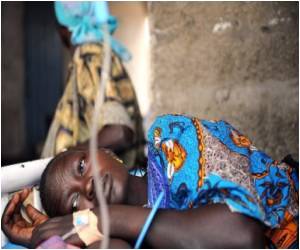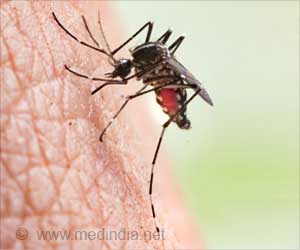Israeli researchers have used attractants of plant origin (fruit or flowers) with a toxic sugar bait to reduce the populations of the malaria-transmitting mosquitoes.

Their work in the use of the Attractive Toxic Sugar Bait Method (ATSB) was applied to control malaria-bearing mosquitoes in the semi-arid Bandiagara District of Mali, West Africa.
Control and treatment sites were selected along a road that connects villages and that had man-made ponds that were the primary larval habitats of Anopheles gambiae and Anopheles arabiensis mosquitoes. Guava and honey melons, two local fruits that have been found to be attractive to both species of mosquitoes, were used to prepare solutions of Attractive Sugar Bait (ASB) and ATSB, the latter containing an additive of boric acid as an oral insecticide. Both included a color dye marker to facilitate determination of mosquitoes feeding on the solutions.
ASB solution in the control site and ATSB solution in the treatment site were sprayed on patches of the vegetation. Consequently, it was seen that the relative abundance of female and male mosquitoes in the ATSB-treated site declined dramatically by about 90% and remained low during one month of monitoring. The females in the diminished population were mostly too young to transmit malaria. In parallel, dye marking in the solutions sprayed in the control site provided evidence that most of the mosquitoes were feeding on the sprayed solutions.
The researchers concluded that the study in Mali shows that even a single application of ATSB can substantially decrease malaria-bearing mosquito population densities and longevity. It is thus likely that ATSB methods can be used as a new, powerful tool for the control of malaria insect carriers, since this approach is highly effective for mosquito control, technologically simple, inexpensive and environmentally safe.
The work in Mali is very much connected to Bill and Melinda Gates Foundation funding of early studies, and this initial report can set the stage for bigger efforts in African countries. It is one of the first new dimensions to control African malaria vectors, yielding good indications that use of ATSB in outdoor environments will complement the current measures to control mosquitoes inside houses.
Advertisement
Advertisement











